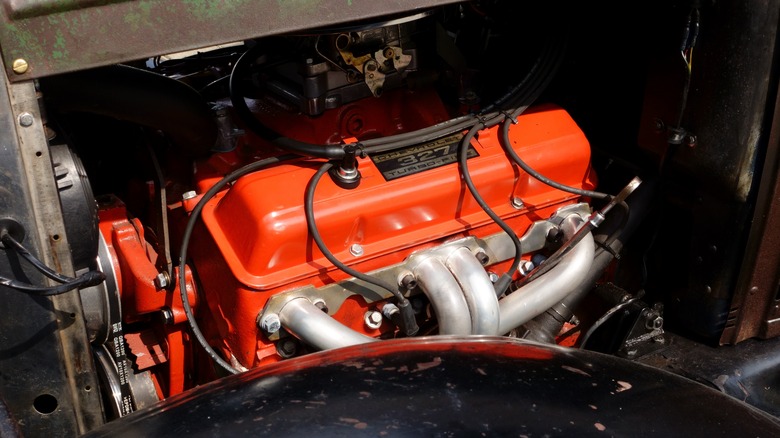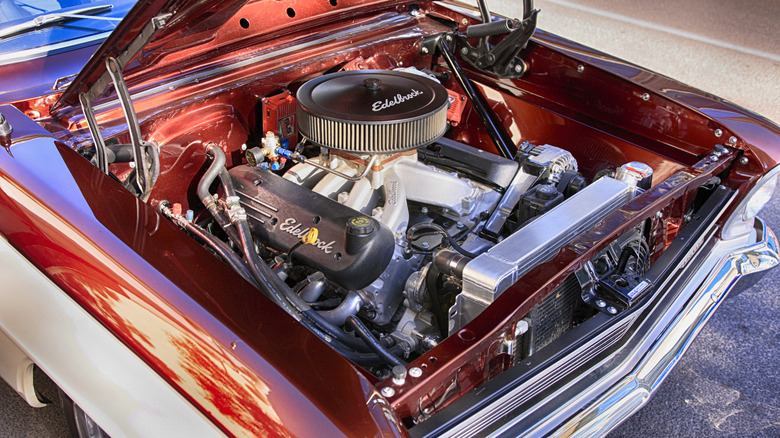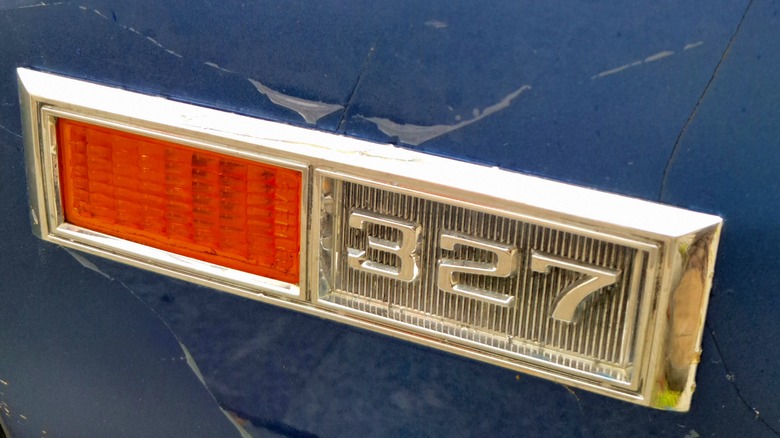The History Behind The Chevy 327 Engine's 'Mighty Mouse' Nickname
When you hear the name "Mighty Mouse," do you think of a vintage engine or a similarly retro cartoon character? Neither one is wrong, and, thanks to the Chevy 327, the two have a lot more in common than meets the eye.
Mighty Mouse is, first and foremost, an animated superhero created by Terrytoons back in 1942. As is often the case with a great cartoon, the little guy became a cultural icon known for his small size and incredible power. In the same way that a person might call something big and strong a "Hulk," "Mighty Mouse" became a nickname for anything small but powerful. Like, most famously, Chevrolet's line of small-block V8 engines.
When GM launched its first small-block V8 in 1955, the 265-CI engine gained a ton of popularity for being quite powerful despite its compact size. The engine's impressive horsepower-to-displacement ratio — it made 195 hp in the Chevrolet Corvette — made the "Mighty Mouse" nickname a perfect fit. With the debut of the new-and-improved Chevy 327 in 1962, the name really stuck. In the decades since, Mighty Mouse has cemented itself in auto history and pop culture alike.
What made the Mighty Mouse so popular?
The 327 engine was actually the third generation of Chevrolet's small-block V8. While the preceding 283 engine had already packed way more punch than expected for a small-block, the 327 was the moment when the engine finally managed to come into its own. With a 4-inch bore and a 3.25-inch stroke, the engine delivered as much as 365 hp (with aftermarket parts like high-lift camshafts and larger carburetors).
The Mighty Mouse was a go-to for drag racers, weekend hobbyists, and all sorts of car owners in between. The comparison to the Terrytoons hero wasn't just for laughs — it was totally appropriate. Like a cartoon mouse that could beat bad guys many times his size, the Chevy 327's compact design was able to keep up with the big-block engines typically found in muscle cars. The 327 proved you didn't need massive displacement to move fast and pull hard. The secret was all in its balance. It kept the same lightweight and efficient package of its predecessors but now had enough engineering power behind it to compete with much bigger engines.
How widely used was the 327 engine?
Chevrolet didn't just use the 327 in muscle cars like the Corvette or Impala. Instead, the 327 powered tons of cars: Bel Airs, Novas, C10 trucks, and even wagons could get a Mighty Mouse engine, allowing it to feature in vehicles far beyond the typical sports car set. It's for this reason that, for much of the '60s, the 327 was practically synonymous with Chevy. Its power, reliability, and versatility (not to mention its sheer popularity) only solidified its place in history.
Though the 327 was eventually phased out in 1969 in favor of larger or more eco-friendly engines, its influence on auto history remains there. Modern GM powerplants like the LS and LT series still use the DNA of Chevy's original small-block design: A compact layout with an impressive power-to-weight ratio. Even so, the Chevy 327 remains one of the most sought-after engines among gearheads. Just like the cartoon mouse it was nicknamed after, it turns out you don't have to be big to be mighty.


